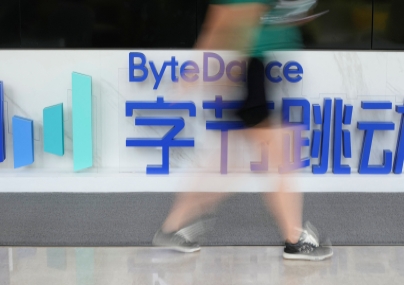The words China and intellectual property are often found together, but not always for the best reasons. Although protection and enforcement of IP rights has improved significantly over the past years, it is still one of the main concerns for both foreign and local companies in the country.
A recent survey of British companies operating in China found few reporting any significant improvements in IP enforcement. In fact, twothirds said enforcement was either “ineffective” or “very ineffective.”
Tough criminal and civil sanctions may help. In August 2012, a Chinese court in Héyuán, Guangdong province, sentenced the leader of a counterfeiting ring making fake Hermès handbags to life in prison. A couple of months earlier, a Shanghai court became the first to issue orders, including fines and detention, against the violators of a preliminary injunction against selling an infringing product. But these kinds of sanctions are still rare: Stephenson Harwood IP partner Audrey Shum describes the Héyuán outcome as “an unusually severe sentence.”
In this environment, an underprepared foreign company which has entered the China market without first marking out its territory is likely to encounter problems soon. Trademark and domain name hijackers remain prevalent in China: the first-to-file rule means that if no right of priority can be established, the first party to file for a registration pre-empts later applicants. Proving prior rights can be difficult, especially if the foreign brand is not yet well known in China. The lead time to trademark registration can be about 12 months, meaning early application is also key. Surprisingly, this is still often overlooked.
“We still see large, sophisticated multinationals that have not analysed their trademark portfolio requirements in China, and have not planned ahead adequately to ensure they have the rights they need to support their business plan,” says Connie Carnabuci, a Hong Kong-based partner at Freshfields Bruckhaus Deringer.
“Sometimes, this is because the business development people are sitting on one side of the house, and the lawyers are sitting on the other side, and the lawyers are responding to instructions rather than being intimately involved with the decisions,” she adds.
Another common mistake is for a foreign company to register its trademark in the right class, but the wrong sub class. A local company can then make its own registration in the correct sub lass, leaving the foreign company unprotected. In this situation, the brand owner will either need to set about proving prior rights – a challenging proposition which requires proving that the brand was already wellknown in China – or engage in difficult, lengthy, and costly commercial negotiations to buy back its rights from the local company. (Things are no better in the patents field where multinational companies filing strategies have only relatively recently started to include China).
Why bother ?
The discussion so far assumes, perhaps naturally, that having your IP infringed is a bad thing. But the recent survey of British companies found that the vast majority of those reporting past rights infringements said they “caused no or minimal impact to their operations.” Does this mean that IP infringements are not actually so bad? If so, should foreign companies stop spending so much time and money worrying about them?
The answer may depend on the industry in which the company operates. In sectors such as luxury goods, it could be said that the market for infringing goods and real goods is so separated that there will not be any real financial harm from the fakes.
“For example, if you compare luxury watches selling at $5,000 and copies of such watches selling for $30 on the side of the street, it’s not as though one wipes the other out. It is likely that the disparity between the real and the fake product is so great that the market for the genuine items is not going to be affected by the low-quality copies,” says Rembert Meyer-Rochow, senior director and senior corporate counsel, Asia-Pacific, at Autodesk Asia.
Private practice IP lawyers are (perhaps unsurprisingly) united in disagreeing with this argument.
“There’s always some damage. It’s not always obvious, because it’s not always a one-for-one lost sale. It’s a much wider spectrum than that,” says Christopher Britton, partner and head of Deacon’s intellectual property department.
One significant type of indirect damage is to reputation: When an infringing product looks the same as, or very much like, the real thing and carries the original owner’s brand name, consumers who buy the infringing product may possibly think that it came from the original owner.
“If a brand gets a reputation for being knocked off, people won’t buy the original because they feel they’ve lost the credibility and chic identity. People go off brands quite quickly if every second person is wearing a counterfeit,” says Britton.
Failing to properly protect a brand’s image will lead to devaluation of that brand, and a loss of control of its value. Lawyers, therefore, emphasise the importance of a brand owner engaging with the enemy rather than sitting back and doing nothing. An illustration of the importance of taking action comes from the story of British manufacturer Dyson, which launched its bladeless Air Multiplier fan in Hong Kong recently. It was not long before cheap, low-quality copies began to appear on the market, including one sold by Hong Kong company German Pool which had been sourced at a mainland China trade fair from a PRC company, Wu Yi Delicacy Electrical Appliances.
Dyson fought back and obtained a High Court injunction against German Pool to prevent any sales of the infringing fan (see Dyson Technology Limited & Anor v German Pool Group Company Limited & Ors [2011] HKCU 1109, HCA838/2011). Specialists say that if it had not been so proactive, not only would the price point of the genuine article have been challenged, but the brand would have suffered damage to its credibility – the fake simply did not work properly although it looked similar to the original.
Damage from IP rights infringements can also be much more direct. A 2011 report published by the U.S. International Trade Commission (China: Effects of IP Infringement and Indigenous Innovation Policies on the U.S. Economy) revealed that American companies whose businesses rely heavily on IP, experienced estimated total losses of about $48 billion in China in 2009 because of infringement.
These losses are often related to research and development costs, as Roger Somerville, senior director of government relations and policy in Asia-Pacific at BSA | The Software Alliance, explains.
“Taking patents on technology for example, companies may spend millions of dollars on research and development to design a product that is more technologically advanced and efficient,” he says. “If the infringers simply copied and sold the same product, they would be competing with the original owners directly without spending any money on research and development. This is clearly unfair and damaging to the original owners of the patent.”
The same point was made by Deputy High Court Judge Coleman SC in the German Pool case. “(The) real reason why there is a disparity between the prices of the products would appear to be that whilst (Dyson has) expended considerable resources and bringing their product to market, (the Chinese manufacturer) spent nothing in research and development, save the cost of copying exactly the … product,” the judge said.
In the software industry, companies face a particularly difficult task in defending their IP rights from infringers as making copies is becoming increasingly easier.
“According to the 2011 Global Software Piracy Study released by IDC this year, the commercial value of pirated software used in the Chinese market is estimated at over $8.9 billion,” says Somerville. “The 2011 edition of the Economist Intelligence Unit’s IT Industry Competitiveness Index also concluded that a 10-point reduction in PC software piracy over four years in China would deliver an additional 250,000 new jobs, $4.4 billion in tax revenues, and nearly $16 billion in economic growth locally.”
The scale of this problem may be related to the fact that in many developing countries, IP infringement rates for software are very high, and in some cases, may be committed by large companies, state-owned enterprises or even government departments, as well as individuals and small companies.
“(These are software users) who can afford to pay, but who choose not to because they can get perfectly functioning unlicensed copies at a lower price from illegal sources,” says Meyer-Rochow.
What the IDC figures do not show is that infringements can bring about many types of damage to rights owners, including loss of competitiveness (because pirated software leads to lower profits and research budgets which would limit and impede innovation), failure of global strategic deployment (because less profit and slow innovation impede business operation and expansion), and loss of reputation.
Enforcement choices
So it seems that is worth going to the trouble of enforc ing intellectual property rights in China. One possible way of doing so is to go after every single infringer and try to clear the market of all the bad products. This method – which Carnabuci refers to as “heads on stakes” – is likely to be very costly and may ultimately be an exercise in futility as it may fail to restrain the source of supply, and only catch operatives on the periphery.
The Chinese courts, government bodies (in the case of administrative actions), and customs authorities have limited resources and may not be able to accommodate the vast number of IP infringement cases that would need to be brought every year in order to pursue every infringement. In mainland China, litigation may also prove ultimately unsatisfying in terms of financial compensation. There is limited scope for discovery and no punitive damages in China, and where the plaintiff’s losses or the defendant’s profits cannot be easily proved, the plaintiff will be left with statutory damages which are capped at Rmb500,000 ($80,000) for trademarks and copyright, and Rmb1 million for patents. Meanwhile administrative actions do not en- able any award of compensation to the party whose rights have been infringed, meaning the rights owner would also need to seek financial redress through negotiations or litigation.
Specialists advise companies to be more selective in their enforcement by identifying the highest-worth targets and taking substantive action against only the key infringing actions: for example, targeting the manufacturing source of the infringing goods or critical components, and attacking other key elements in a sophisticated network of manufacturing and distribution.
“You need to take the conspiracy theory approach and build an intelligent map of the supply chain – to identify where the high-worth targets are and where maximum disruption to the supply chain can be achieved,” says Carnabuci.
Less substantive instances of infringements can be dealt with by in-house lawyers sending cease and desist letters. In this way, infringing goods can be dealt with quickly before they saturate the market and dilute the brand, without a huge commitment of resources. Companies can also take proactive non-legal action to stay ahead of infringements.
“A very large proportion of counterfeit and unauthorised products still come from the inside,” says Carnabuci. “So building loyalty through strong HR policies where you send people abroad to study, provide good medical cover and so on, are good disincentives to theft; strong supply chain management and supervision, ensuring fair risk and reward sharing, is also key.”
In-company security is a vital, but often overlooked, component of this approach. Companies could use security cameras, limit who can access sensitive information, use strict protocols around passwords and passcodes, make employees and clients sign confidentiality agreements, or even keep sensitive material completely offshore. Businesses should also manage their supply chains carefully, both up and downstream, and take due diligence of all partners very seriously.
Somerville advocates an even more holistic approach to dealing with IP in China, taking the issue entirely outside of the company and its supply chains.
“Compared with mature Western markets, awareness of the importance of IP protection is low in both the public and the business sphere in China,” he says. “Therefore, raising IP protection awareness, whether through education, advocacy, or other means, is the main objective multinational companies should consider investing their resources in.”
Be prepared
There is no doubt that China is aware of continuing deficiencies in its IP enforcement, and is working hard to improve the situation. But change will be gradual. Meanwhile, both foreign and domestic companies need to think hard about their IP strategies. New entrants to the market must come prepared with thorough research and registration of any existing rights. More experienced players cannot be complacent, but should try to think of cost-effective ways to stay ahead of the infringers.
Although not all IP infringements may result in direct or immediate material damage, the effects on reputation, goodwill and future profitability can be very severe. And the cost of putting things right can be even more damaging.
Follow us on Twitter: @ALB_Magazine.



